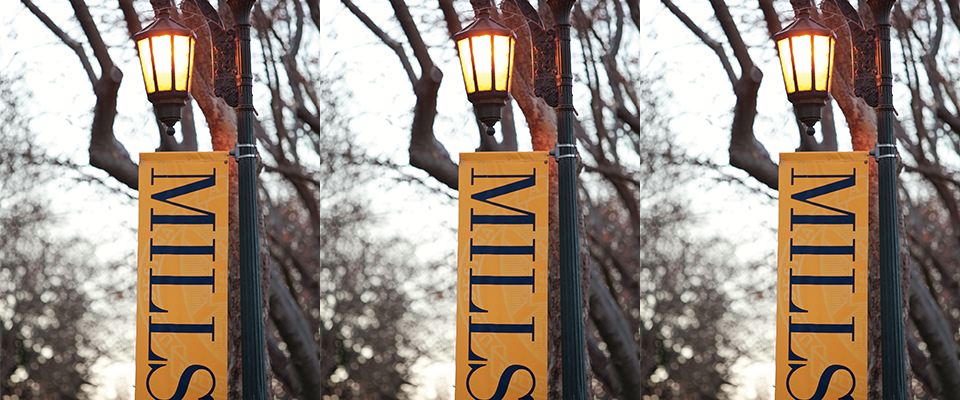What to do about typically anemic voter turnout among young people? Two UC Berkeley law students are behind a proposal that would automatically register students to vote when they enroll for classes in any public college or university in California.
Berkeley Law third-year Cindy Dinh and first-year Paul Monge drafted the bill with its sponsor, Assemblymember David Chiu, D-San Francisco. He accepted their idea as part of “There Ought to Be a Law” a program, which allows people to submit plans to change or create laws.
Assembly Bill 2455 would apply to any student in the UC, CSU or community college system unless they opted out—making California the first state in the nation to automatically register students to vote through public higher education systems, according to Monge.
It would be similar to California’s new Motor Voter Law, which will automatically register people to vote when they apply for a license at the DMV.
“The more students who are voting, the more likely the officials will respond to these concerns….If more students get involved, the dynamic of the conversation around tuition could change.”
Only about 8 percent of the state’s eligible voters ages 18 to 24 cast ballots in the last statewide election—as data expert Paul Mitchell told KQED at the time, “the average voter was older than the average Californian’s parents.” Turnout in local-only elections is often more abysmal. The bill’s backers say they hope not only to boost future turnout, but to use those extra numbers to wield greater influence on public policy.
“One of the greatest challenges for the University of California is the ongoing disinvestment in financial support by the State of California,” says Monge. “All stakeholders of the UC system including students, staff, faculty and alumni have a direct interest in making sure that our state leaders are willing and able to prioritize funding support for public higher education in order to maintain the integrity of our cherished educational systems. By expanding the political prowess of the student population in California through automatic voter registration, we can ensure that our needs and concerns will be given an adequate level of priority by state legislators.”
“The more students who are voting,” Dinh says, “the more likely the officials will respond to these concerns. The UC tuition hike has always been an issue year after year, and if more students get involved, the dynamic of the conversation around tuition could change.”
Of course, that operates under the assumption that those newly registered will ultimately vote.
In fact, research shows that after voter registration drives, only about 10 to 25 percent of the newly registered who wouldn’t have otherwise have registered actually go through with voting, says UC Berkeley political science professor Joel Middleton. “My guess is that the rates of voting among those automatically registered would be on this order,” he says, “possibly even lower.”
And that’s not very high, given that—depending on the type of election—overall turnout of registered voters is between 40 and 70 percent.
“The result is also not terribly surprising when you consider those who register in a registration drive and would not have otherwise registered are people that are generally less politically engaged,” Middleton says. “If they were politically engaged, then they probably would have registered even in the absence of the registration drive.”
Berkeley political science professor Sarah Song calls automatic registration “a great example of nudging people to do what’s in their best interest, in this case, exercise their right to vote.”
Of course the other beneficiary is likely to be the Democratic Party because, as Song notes, young voters in college tend to align more with the left on a range of social and foreign policy issues. Pew Research shows that Millennials in general, with or without college degrees, are more liberal. That helps explain why, in this year’s Democratic presidential primary, young voters prefer Sen. Bernie Sanders by a wide margin over more moderate former Secretary of State Hillary Clinton.
But while an influx of youthful voters could influence the primary, Middleton notes that it would be inconsequential in the general election, given that California is likely to favor the Democratic nominee anyway.
“I think on a statewide level there could also be some minor, possibly immeasurably small, effect by increasing the number of liberal and Democratic voters,” he says.
Turnout for the youngest voters actually hit its all-time high in the very first presidential election after 18-20 year olds gained the right to vote via the 26th Amendment—an amendment ratified in 1971 amid concern that American men could be drafted into the military at age 18 but weren’t eligible to vote until their 21st birthday. Anti-war activists cheered, expecting that the younger generation would vote for anti-war Democratic candidate George McGovern. He won a slight edge among college students but lost significantly among young people not in college—and President Nixon was re-elected in a historic landslide.
Despite all those “Rock the Vote” efforts, youth turnout never again approach the 50 percent mark, although it did spike with a robust vote for Democrat Barack Obama in the 2008 election.
All that aside, automatic student voter registration would, at the very least, allow for better voter record keeping.
“Because college and university students move so frequently, any time they enroll for a new academic term, the updated residential address they provide to the campus can also be used to update their registration record so that it remains current,” Monge says. “Since the UC, CSU and CCC systems maintain accurate student information, this also reduces the risk that young voters will experience complications with their registration, such as typos or incomplete information.”
And keeping better track of voters could make a key difference in local districts.
“A non-negligible portion of students are registered at their parents’ address. If a large student population suddenly registers at their university address, rather than ‘back home,’ that could meaningfully change the composition of the electorate in particular districts,” Middleton says. “This might be a consideration if you were, say, running for state assembly in Davis, where the student population is a substantial portion of the entire population.”
What about the potential privacy concerns of collecting student data and voter registration data at the same time? Monge says that many of those concerns were already raised and addressed with the Motor Voter Program, but adds that they are building privacy protections into the bill.




















